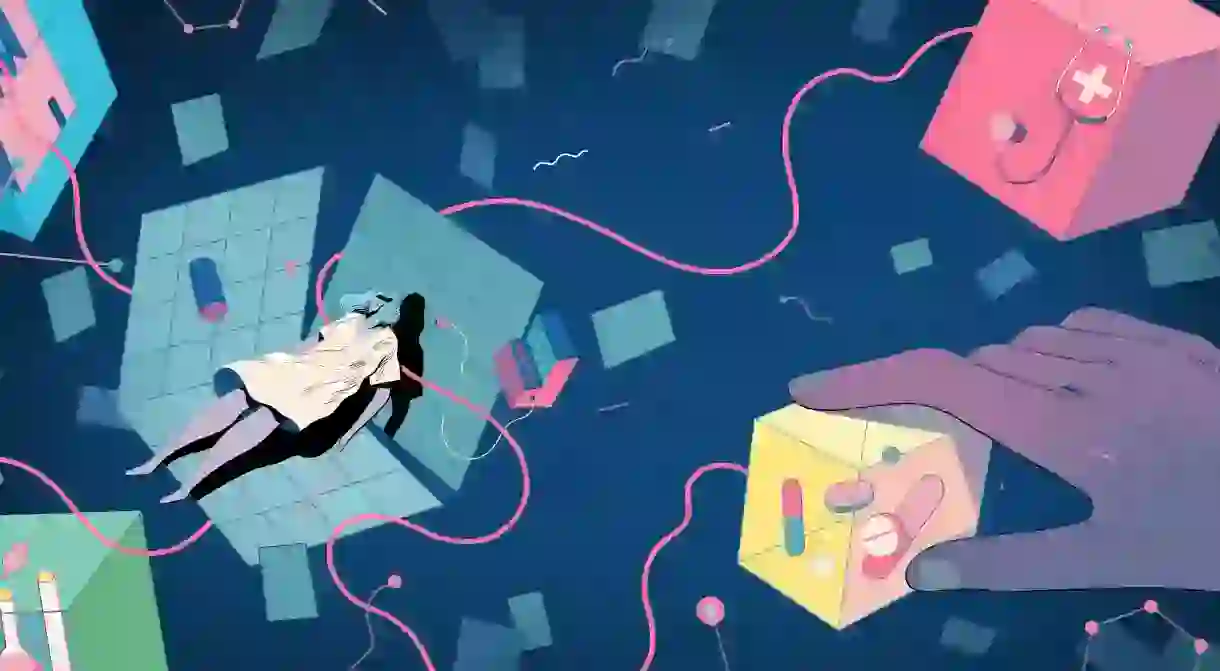Meet Rune Fisker: The Danish Illustrator That Will Blow Your Mind

Meet one of Copenhagen’s most prominent contemporary illustrators and get to know his work: an entanglement of geometry, lines and tones that make for astonishing scenes that walk a tightrope between fantasy and reality in an original, surrealist style.
Rune Fisker is a Copenhagen-based illustrator who loves animating, drawing storyboards and creating scenes inspired by every little thing he sees in his daily life. Along with his brother Esben, Rune is running Benny Box, an award-winning design studio that has worked for a number of clients including Netflix, Amnesty International and Norwegian.
Fisker’s chaotic illustrations have adorned the pages of New York Times, Wired and Die Zeit among others.
Who is Rune Fisker?
I’m an illustrator based in Copenhagen, Denmark.
At what age did you realize that you not only enjoyed drawing but that you were actually good at it?
It was probably around the age of 8–9 that I realized that I had some talent, if you can call it that.

Can you tell us a bit about your very first illustration?
I don’t remember my first illustration, but I remember drawing a lot of war scenarios as a kid. Tanks, planes, little stick guys with guns.
Where does the inspiration come from when creating your art?
Music, movies, books, the lukewarm pizza I ate three days ago. All my experiences, things I see, hear, etc., get stirred around in my subconscious, and sometimes something interesting pops up. Of course, when you are working for clients, you can’t wait for some divine, creative lightning bolt to hit you; you have to work at it. But you still get inspiration from that creative melting pot.

What message do you aim to transmit when creating your work?
I’m sorry to say that I don’t have a concrete message as such. I’m more interested in creating a feeling; to [take] the viewer somewhere other than here. But it also depends on the assignment. For my own work, I’m drawn towards a bit of a darker world than I necessarily am when working for clients.
Do you have any favorite illustrators?
I’m a big admirer of (now deceased) illustrator and artist Palle Nielsen. I don’t think a lot of people outside Denmark know of him, which is a shame. Of still living illustrators, I really like Jun Cen, Daniel Savage and Nicolas Ménard.

You have been working as an illustrator for many years now. When looking at the illustration scene today, what would you say are the major differences when comparing the work as well as the industry?
At the moment, I actually think there’s a lot of demand for illustration across a lot of different platforms, which is great. And there’s an insane amount of talent out there – a ton great illustrators. On the other hand, the prices and budgets have gone down, so it can be hard to make a living working as an illustrator.
What cities or even countries would you say is a good fit for illustrators at the moment?
One of the great things about being an illustrator is that you can do it from anywhere in the world – you don’t have to be in the same city, or even timezone, as your clients. For me, I could do this anywhere. Just give me a piece of paper and a pencil (a computer, and a Wacom board) and I’m happy, whether I’m in Copenhagen or Tokyo.

What is your view on the illustration scene in Copenhagen?
For such a small country, I think that we have a surprisingly large amount of really talented illustrators. But it can be hard making a living doing illustration in Denmark because the country is so small.
What advice can you give illustrators looking to reach your level of success one day?
I know it sounds a bit cliché, but if you want to get good at something you have to spend a lot of time practicing. You’ve got to draw every chance you get, on every scrap or screen you can find. And I also think it’s important to find your style, your voice; find that thing that makes you different, that makes you stand off from all the other illustrators.














